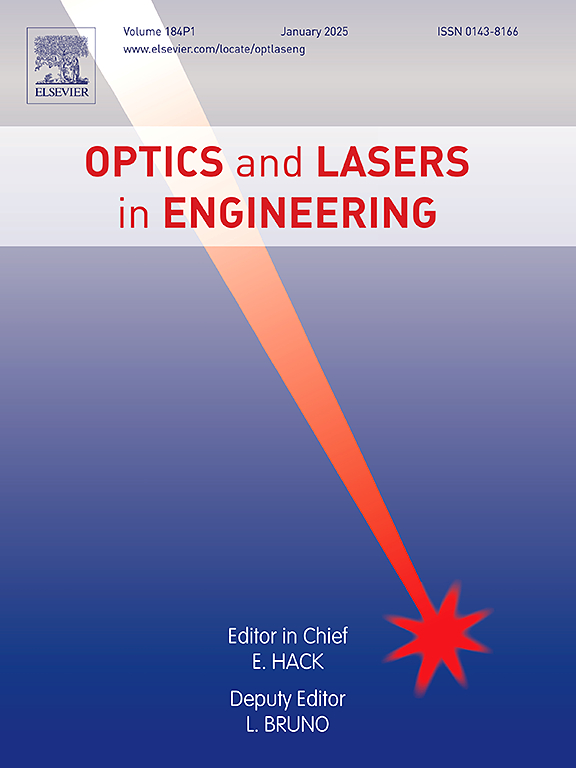用z扫描方法研究血红蛋白的非线性浓度依赖性
IF 3.5
2区 工程技术
Q2 OPTICS
引用次数: 0
摘要
在目前的工作中,我们研究了血红蛋白在不同浓度和恒定激活激光(CW)功率下的非线性。这里的非线性是由热透镜现象引起的。这种浓度依赖性分析表明,非线性折射率和吸收系数随血红蛋白浓度的增加而增加。由于自散焦和反向饱和吸收的影响,血红蛋白具有负的n2和正的β。反向饱和吸收效应也有助于激发态吸收。本研究制备了浓度为0.5 μmol/L至150 μmol/L的磷酸缓冲盐水(PBS)中的血红蛋白悬浮液。由于人血清中血红蛋白浓度为0.6 μmol/L,我们从较低的0.5 μmol/L开始。血红蛋白呈非线性,检出限为~ 0.5 μmol/L。由于血红蛋白浓度的降低和样品中相当大的非线性,近孔径Z-Scan实验没有显示出任何不对称。我们坚信,我们直接和强大的基于非线性的方法将很快为基于这种蛋白和血红蛋白检测的疾病诊断打开新的大门。本文章由计算机程序翻译,如有差异,请以英文原文为准。
The nonlinear concentration-dependent study of hemoglobin using the Z-scan approach
In the present work, we investigated the nonlinearity of hemoglobin using close and open-aperture Z-scan techniques at different concentrations and a constant activation laser (CW) power. Here the nonlinearity arises due to the thermal lensing phenomena. This concentration-dependent analysis revealed that the nonlinear refractive index and absorption coefficient increase with hemoglobin concentrations. The hemoglobin possesses a negative n2 and a positive β due to the effects of self-defocusing and reverse saturation absorption. The reverse saturation absorption effect also contributes to excited-state absorption. Hemoglobin suspensions in Phosphate buffer saline (PBS) with concentrations ranging from 0.5 μmol/L to 150 μmol/L were made for the current study. Because the hemoglobin concentration in human serum is <0.6 μmol/L, we started with a lower value of 0.5 μmol/L . It is observed that haemoglobin shows nonlinearity, with a detection limit of ∼ 0.5 μmol/L. Due to the reduced haemoglobin concentration and considerable nonlinearity in the sample, the close aperture Z-Scan experiment did not show any asymmetry. We firmly believe that our straightforward and robust nonlinearity-based approach will soon open new doors for disease diagnostics based on this protein and hemoglobin detection with open and closed-aperture Z-scan setups.
求助全文
通过发布文献求助,成功后即可免费获取论文全文。
去求助
来源期刊

Optics and Lasers in Engineering
工程技术-光学
CiteScore
8.90
自引率
8.70%
发文量
384
审稿时长
42 days
期刊介绍:
Optics and Lasers in Engineering aims at providing an international forum for the interchange of information on the development of optical techniques and laser technology in engineering. Emphasis is placed on contributions targeted at the practical use of methods and devices, the development and enhancement of solutions and new theoretical concepts for experimental methods.
Optics and Lasers in Engineering reflects the main areas in which optical methods are being used and developed for an engineering environment. Manuscripts should offer clear evidence of novelty and significance. Papers focusing on parameter optimization or computational issues are not suitable. Similarly, papers focussed on an application rather than the optical method fall outside the journal''s scope. The scope of the journal is defined to include the following:
-Optical Metrology-
Optical Methods for 3D visualization and virtual engineering-
Optical Techniques for Microsystems-
Imaging, Microscopy and Adaptive Optics-
Computational Imaging-
Laser methods in manufacturing-
Integrated optical and photonic sensors-
Optics and Photonics in Life Science-
Hyperspectral and spectroscopic methods-
Infrared and Terahertz techniques
 求助内容:
求助内容: 应助结果提醒方式:
应助结果提醒方式:


